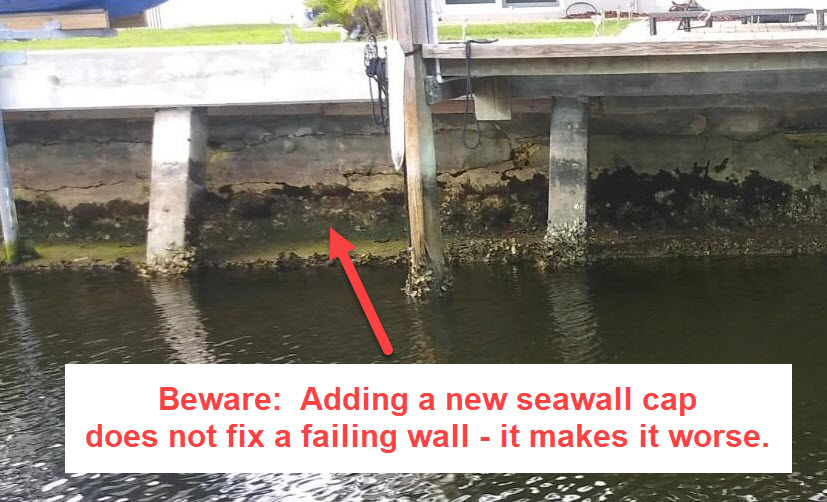According to the Broward County Climate, Energy and Sustainability Program website regarding the Regional Resilience Standard on Seawalls, the Broward County Commission on November 13, 2018, has “approved the initiation of a land use plan amendment to establish a seawall and top-of-bank elevation for tidally-influenced waterways, in accordance with sea level rise predicted through 2070.” The proposed policy includes: (1) requiring a minimum elevation of 4-feet NAVD88 by 2035, and (2) 5-feet NAVD88 by 2050 for seawalls and shorelines.
The proposed policy was based on studies and risk assessment organized and completed by the US Army Corps of Engineers and Broward County. The Broward County Environmental Planning and Community Resilience Division presented a Proposed Minimum Seawall Height Policy . Other presentations can be viewed online at the Broward County website.
Everyone living on the East Coast of Florida, whether you own a property on the waterfront or not, is affected by the flooding due to tidal changes and the increase in sea level rise. Protecting land, businesses, and homes with taller seawalls is one primary solution to the problem, as is stated in the Broward County proposal. Properly installing new seawalls or making walls taller is not an easy fix because it is a major expense for waterfront property owners and the local taxpayers.
Adding Cap to Increase Seawall Height May Not be the Best Solution
In the construction field, adding cap to increase seawall height is called a “seawall cap overpour”. A seawall cap overpour to raise seawall height could do more harm than good. Most seawalls in the area are 50+ years old with their structural condition already compromised. Their original design life was only 50 years. The idea of increasing wall height by doing a cap overpour has caused many seawalls to fail. They were never intended in their original design to support an additional 300+ pounds per foot of vertical load. Adding batter piles in front, along with a cap overpour, is also a bad idea. This doubles the width of the cap increasing the load from the wet concrete to 600+pounds per foot. The problem with this is that the 50-year-old seawall must support this load while waiting for the concrete to cure. Most seawalls were never intended to support any additional vertical load.
Many seawalls on Florida’s East Coast are concrete panels coming to the end of being able to protect property. Over time, the seawalls get weaker because the salt water intrudes the concrete and rusts the steel-rebar which provides the strength of the wall. Adding feet of concrete cap on top of existing concrete seawalls will be the least expensive solution for only a very short period of time. These weak walls cannot hold the additional weight or load. With the extra weight, the wall will collapse and then a new wall will have to be installed.
To properly build taller seawalls, take a look at the Truline seawall system. Truline is an innovative vinyl sheet piling system that is driven in the ground, creating a forming system to pour-in-place steel-reinforced 8” concrete retaining walls – when properly designed and installed, Truline walls will have a life expectancy of 75+ years. For more information about the Truline seawall system, visit www.truline.us.

